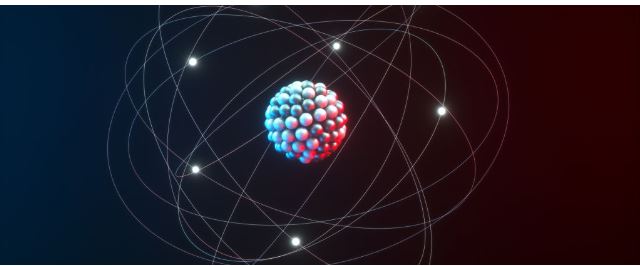


 9:58:56
9:58:56  2023-07-03
2023-07-03  871
871

Physicists have identified a new isotope for the rarest element in our planet's crust with 85 protons and 105 neutrons, and 190-astatine is the lightest isotope discovered so far.
"Studies of new nuclei are important for understanding the structure of atomic nuclei and the known limits of matter," says physicist Hanna Kokkonen of Jyväskylä University in Finland.
Astatine is highly radioactive and very unstable. It only occurs in nature as a kind of starting point, a product of the decay of heavy elements which in turn quickly decompose into lighter elements. The most stable isotope of astatine is 210-astatine.
This is the reason why it is so rare in nature, that there is hardly one gram of it on our planet at one moment. It forms, then steps back, releasing protons and neutrons until it lands in the form of a stable element, methyl bismuth or radon. Because they are short-lived, their properties are largely derived from inference and are not known with certainty.
We don't even know for sure if it's a halogen or a metal. It is a very strange element. But studying it can help us understand not only the element itself, but also the deformation of the nuclei of different isotopes, and radioactive decay.
The research was carried out using a device called a gas-filled reflux separator, used to perform fusion and vaporization experiments. This occurs when the heavy ions in the target nuclei are accelerated to fuse into the heavier elements, to then decay through the alpha process, releasing alpha particles consisting of two protons and two neutrons (mainly helium) until they stabilize.
The researchers fired 84 strontium at the target silver atoms, and studied the resulting decay products. They weren't looking for 190-astatine, but 190-astatine is exactly what they found.
"In my thesis, I analyzed the experimental data among which the new isotope was found," explains Kokkonen.
Previously, the most neutron-deficient isotope known to us was 192-astatine. The researchers analyzed the new discovery, and compared it to the predictions of atomic mass models to see if it could tell us anything new about astatine.
Reality Of Islam |
|

Researchers

A new chip-

A large inf

Choosing th
 9:3:43
9:3:43
 2018-11-05
2018-11-05
10 benefits of Marriage in Islam
 7:5:22
7:5:22
 2019-04-08
2019-04-08
benefits of reciting surat yunus, hud &
 9:45:7
9:45:7
 2018-12-24
2018-12-24
advantages & disadvantages of divorce
 11:35:12
11:35:12
 2018-06-10
2018-06-10
 6:0:51
6:0:51
 2018-10-16
2018-10-16
 2:34:48
2:34:48
 2022-01-18
2022-01-18
 7:0:55
7:0:55
 2022-05-17
2022-05-17
 8:15:37
8:15:37
 2023-02-16
2023-02-16
 11:2:27
11:2:27
 2022-10-06
2022-10-06
 7:59:14
7:59:14
 2018-06-21
2018-06-21
 9:39:36
9:39:36
 2022-12-28
2022-12-28
 1:38:41
1:38:41
 2021-12-08
2021-12-08
 5:41:46
5:41:46
 2023-03-18
2023-03-18
| LATEST |